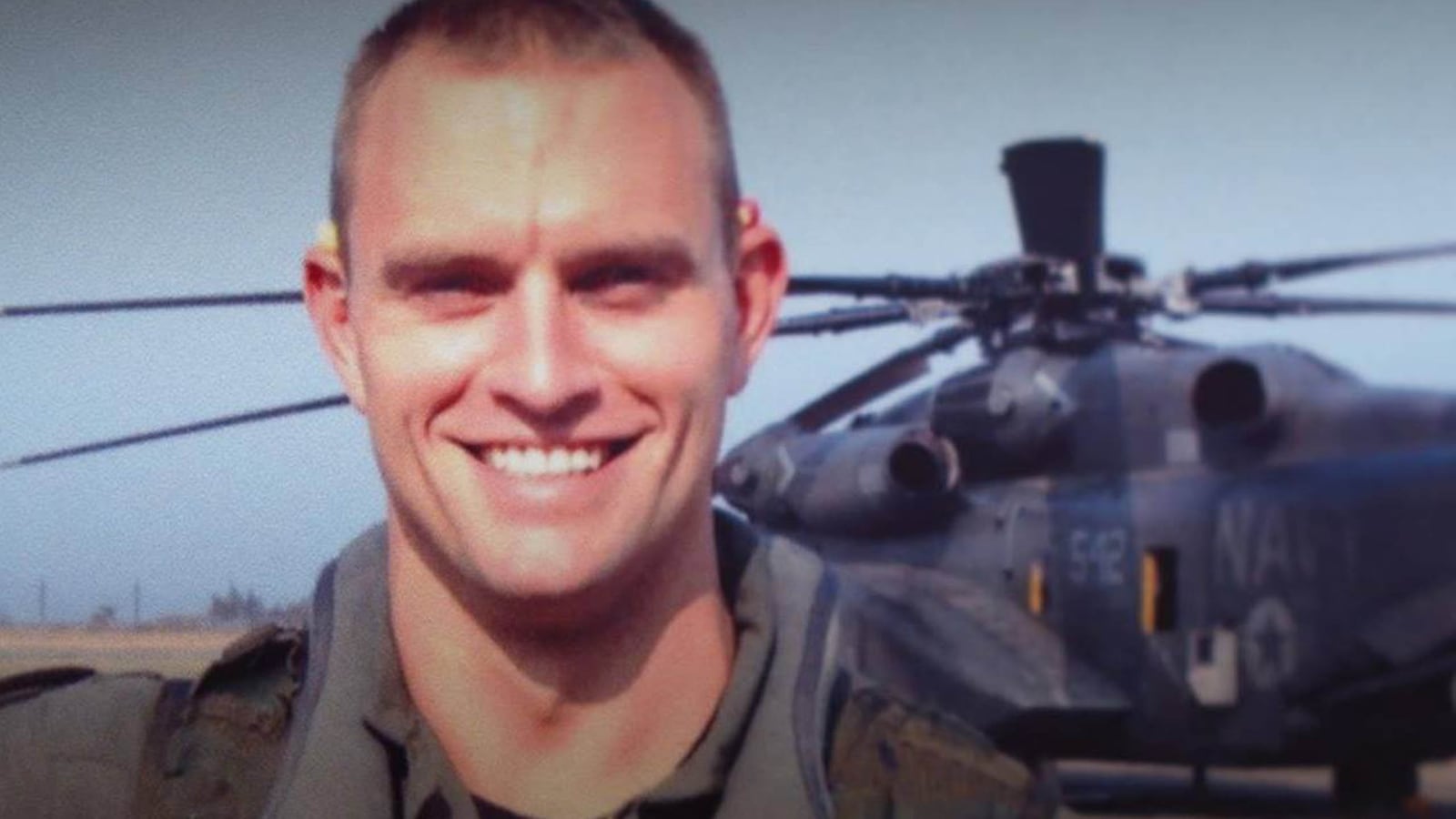On Jan. 8, 2014, a fire broke out in the cabin of a U.S. Navy MH-53E helicopter flying low over the Atlantic Ocean off the Virginia coast.
The five crew members became disoriented in the billowing black smoke, according to the Navy’s official investigation. The 16-ton, three-engine helicopter, equipped to detect undersea mines, plummeted into the sea.
Three people died, including 25-year-old Petty Officer Brian Collins. Jason Paladino, a childhood friend and journalism student, attended Collins’s funeral. “It hit me hard,” Paladino told The Daily Beast. “I thought it was just a tragic loss. Then at his funeral I met people he served with and I realized there was more to the story.”
Now Paladino, 28, has produced a documentary revealing the danger he claimed the H-53 helicopter poses to passengers and crew, as well as what he characterized as the military’s efforts to downplay that danger. Who Killed Lt. Van Dorn, named for Wes Van Dorn, the pilot who died flying Collins’s MH-53E, is playing at film festivals and special events across the country.
The MH-53E is a version of what arguably is the Navy and Marine Corps’ most crash-prone major helicopter type. Dozens of accidents involving the Navy’s MH-53E Sea Dragon minesweeper and the Marines’ CH-53E Super Stallion transport have killed 132 crew and passengers since the type first flew in 1974.
Since the 2014 MH-53E crash, five additional CH-53Es have suffered serious accidents—“Class A incidents,” in military parlance—killing 19 people.
Still, the Marine Corps insists the helicopter is reasonably safe. “The Super Stallion is a proven airframe that has been put into service over the years in the most challenging environments and mission sets possible,” Capt. Christopher Harrison, a Marine spokesperson, told The Daily Beast. “It has a Class A mishap rate on par with other Marine Corps aviation platforms, and it is a vital asset to our assault support operations.”
Harrison said that flying can be dangerous, that “there will always be inherent risk.”
Paladino countered that many of the H-53E crashes—and the related deaths—would have been preventable with adequate maintenance and training. But the military prioritized spending money on expensive new aircraft such as F-35 stealth fighters and V-22 tiltrotors.
Deprived of money and attention, less glamorous aircraft types such as the H-53E began to break down. The Marine Corps, for one, does not dispute that the H-53E force has suffered a sharp decline in the condition of its aircraft—although it blames the stress of wartime flying rather than any organizational neglect. “Sixteen years’ combat operations have stressed the limited number of these aging airframes,” the Marines' annual aviation report for 2018 states.
On average in 2018, fewer than half of the Marines’ 143 CH-53Es have been in flyable condition at any given time, according to the aviation report. Generally speaking, the Defense Department wants 75 percent of its aircraft to be flight-ready.
The Navy’s 29 MH-53Es are even less reliable, with only a “few” ready to fly on a given day, according to an investigation by The Virginian-Pilot newspaper. The Marines’ goal is, by 2020, to cut in half the number of unflyable helicopters.
But even as the military worked to fix the helicopters, it silenced any service members, including Van Dorn, who dared to question maintenance procedures and spending priorities. “In our experience making the film, we found the Navy and Marine Corps respond with hostility to questions about mishaps and known safety issues,” Paladino told The Daily Beast.
“There have been cases where enlisted personnel have told us that our stories spurred change that wouldn't have happened otherwise.”
In Van Dorn’s case, that suppression arguably cost him his life. He knew it might as he complained to his wife about the amount of time he spent badgering his squadron-mates over what he viewed as inadequate maintenance procedures. “I want to get flying, but I also need to fix maintenance so I don't die while flying,” he told his wife, according to The Virginian-Pilot.
The Navy concluded that chafed wiring contributed to the fire that caused Van Dorn’s MH-53E to crash. But at the time of the accident, rules didn’t require routine inspections to check the wiring, investigators explained in their report.
The H-53E design itself isn’t at fault, Paladino explained. “I don’t think we are arguing that it is too dangerous to use.” Rather, people failed the helicopter—and each other.
“The film shows that known safety issues were ignored, resulting in the unnecessary deaths of people serving our country. It shows that people who raised concerns about safety were ignored or worse, forced out of the Navy. And it shows that the helicopters were neglected at the same time the Department of Defense was spending big on fancy new toys.”
“Aviation is dangerous, we accept that,” Paladino said. “But at a certain point it’s helpful to ask, ‘Why?’ I hope this film gets the message across that many of those killed on the 53E died unnecessarily, after multiple warning signs were ignored. This is the human cost of a twisted priority system.”







